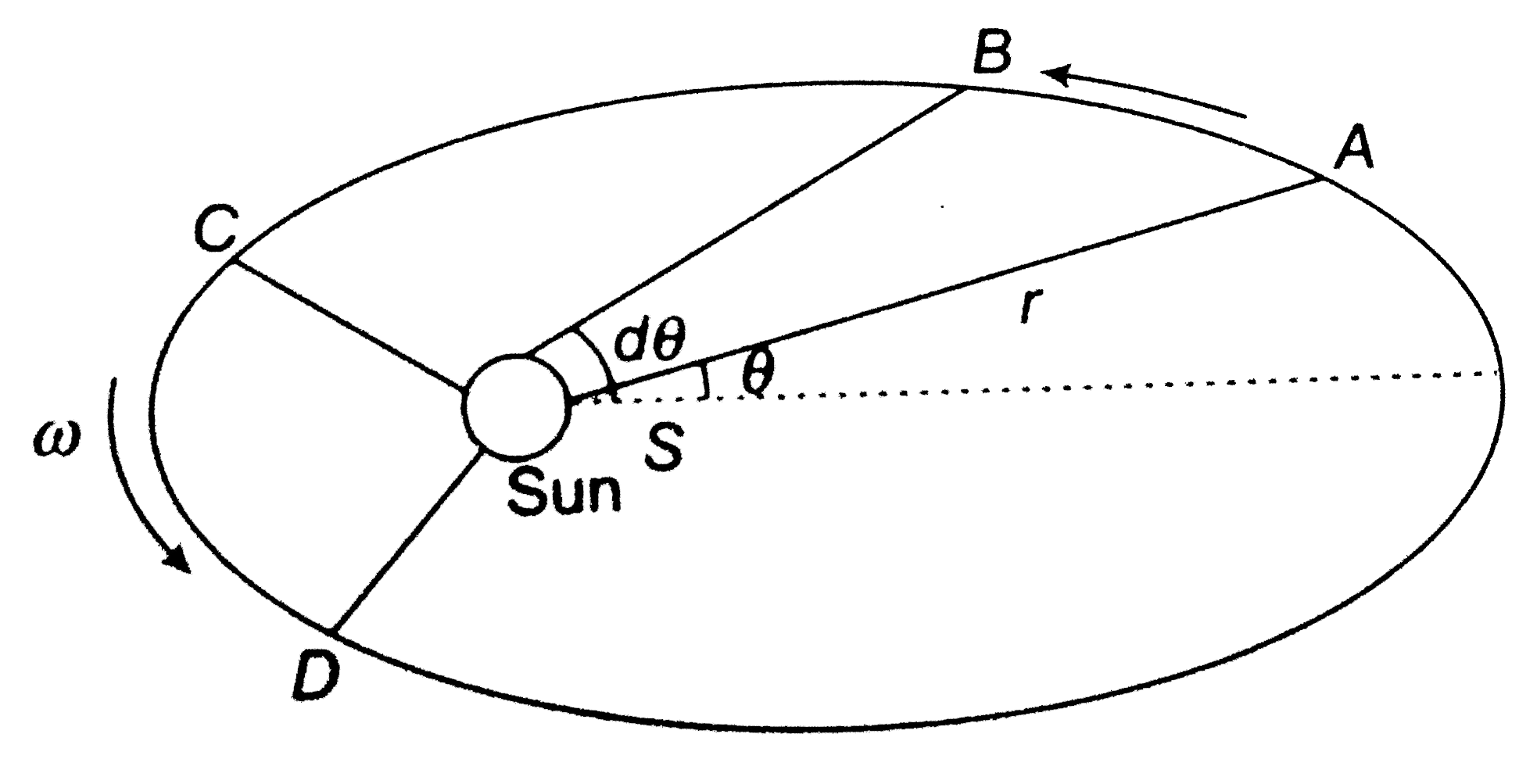The motion of planets in the solar system is an exmaple of the conservation of
A
mass
B
linear momentum
C
energy
D
angular momentum
Video Solution
Text Solution
The correct Answer is:D
From Kepler's second law a line joining any about to the sun sweeps out equal areas in equal times, that is, the areal speed of the planet remains constant.

= area of curved triangle
The instantaneous areal speed of the planet is
Where is an angular spped. Let be angular momentum of planet about sun
From kepler's law areal speed is constant, therefore angular momentum is constant.
Hence, Kepler's second law is equivalent to conservation of angular momentum
|
Topper's Solved these Questions
- GRAVITATIONBOOK - A2ZCHAPTER - GRAVITATIONEXERCISE - Chapter Test
29 Videos
- GRAVITATIONBOOK - A2ZCHAPTER - GRAVITATIONEXERCISE - NEET Questions
42 Videos
- GENERAL KINEMATICS AND MOTION IN ONE DIMENSIONBOOK - A2ZCHAPTER - GENERAL KINEMATICS AND MOTION IN ONE DIMENSIONEXERCISE - Chapter Test
30 Videos
- KINETIC THEORY OF GASES AND THERMODYNAMICSBOOK - A2ZCHAPTER - KINETIC THEORY OF GASES AND THERMODYNAMICSEXERCISE - Chapter Test
29 Videos
Similar Questions
Knowledge Check
The motion of planets in the solar system is an exmaple of the conservation of
AMassBLinear momentumCAngular momentumDEnergyThe motion of planets in the solar system in an example of conservation of
AmassBmomentumCangular momentumDkinetic energyThe smallest planet in the solar system is:
AMercuryBVenusCEarthDMars
The hottest planet in the solar system is
View SolutionThe third planet in the solar system is also called
View SolutionMark the following statements as true (T) or false . Mercury is the smallest planet of the solar system. ( )
View SolutionThe only planet with life in solar system is
View SolutionThe smallest planet in the solar system is:
View Solution
